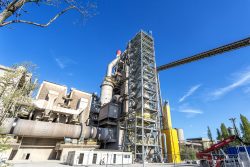We will accelerate reductions over the course of this critical decade. With respect to clinker substitution – increased use of fly ash and ground granulated blast-furnace slag (ggbs) will still play an important role in this decade; ground limestone, recycled concrete fines and introduction of calcined clays and other new promising materials will also play an increasing role.
Further reductions will mean limiting fossil-fuel use at every point in supply and production chains, as well as repurposing society’s waste as a smart and greener alternative. We are making progress on this important energy transition which, at the scale of the sector, is substantial.
Additionally, it is critical that in this decade we bring forward the required breakthrough technologies to be ready for commercial scale deployment by the end of it. Investing now in technologies and innovation that will come on stream in later years.
Our members are investing and researching into alternatives to Portland clinker cements. Whilst these may contribute to CO2 reductions, they will likely have a limited role because of the lack of raw material at the required scale.
Carbon Capture Utilisation and Storage (CCUS) is an essential component of our Roadmap. CCUS pilots already have substantial momentum with live projects and announcements picking up pace in North America, China, India and Europe. This technology works, so we need to work with stakeholders such as policymakers and the investment community to help develop, de-risk and deploy the technology and infrastructure over this time to help transform the industry worldwide.
Whilst by no means straightforward, there are also relatively easier wins in the concrete production and concrete design and construction phases. Indeed not all changes require investment, and some can even reduce costs – reducing the quantities of raw materials through improved design processes, use of reprocessed and recycled material, through re-use of elements, and extending the lifetime of whole projects. Design efficiency and utilising the benefits and versatility of concrete can result in less material being used. This means viewing concrete and cement not only as products to be produced, but as crucial components in a circular economy.
A comprehensive policy framework will need to be developed in this important decade, in order to achieve the shared goal of net zero concrete. This will need to be a joint endeavour by industry, policymakers and governments.
